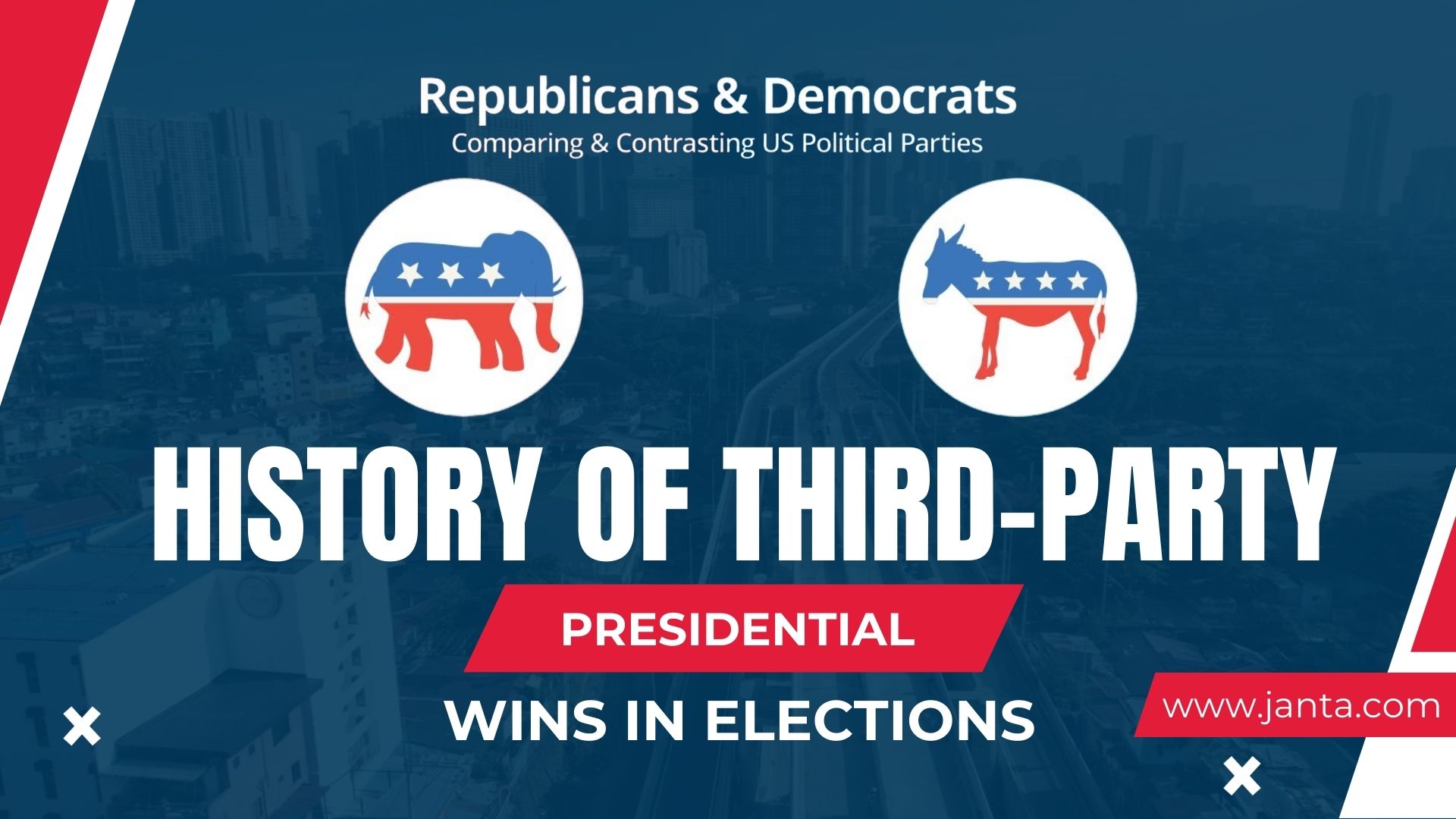The political landscape of the United States has not always been dominated by the Democratic and Republican parties. Third-party candidates have disrupted the status quo, bringing unique perspectives and forcing critical issues into the national conversation. This blog explores the history of third-party influence in US presidential elections.
This guide provides a comprehensive overview of early voting dates, locations, eligibility requirements, voting procedures, and more for the upcoming election.
Early Third-Party Influence
In the 19th century, third-party candidates occasionally made significant impacts on election results. For example, in 1848, the Free Soil Party, with Martin Van Buren as its candidate, aimed to stop the expansion of slavery into the western territories. Although Van Buren did not win any electoral votes, his candidacy influenced the election outcome, contributing to Zachary Taylor’s victory.
In 1856, the Know Nothing Party, represented by Millard Fillmore, won 873,053 popular votes and eight electoral votes. These early third-party efforts demonstrated that alternative political voices could garner substantial public support, even if they rarely translated into electoral victories.
Progressive Era and Bull Moose Party
One of the most remarkable third-party campaigns in US history was Theodore Roosevelt’s 1912 run under the Progressive Party, also known as the Bull Moose Party. After losing the Republican nomination to incumbent President William Howard Taft, Roosevelt launched his third-party campaign, advocating for progressive reforms such as women’s suffrage, labor rights, and government regulation of business. Roosevelt secured 88 electoral votes, finishing second behind Democrat Woodrow Wilson. The Bull Moose Party’s influence pushed the major parties to adopt more progressive policies.
Other Notable Third-Party Campaigns
Throughout the 20th century and into the 21st, several third-party candidates have mounted significant campaigns. George Wallace, running as the candidate of the American Independent Party in 1968, won 46 electoral votes, carrying five states. Wallace's platform of segregation and states' rights resonated with a segment of the electorate, particularly in the South.
In 1992, Ross Perot, an independent candidate, captured national attention with his focus on fiscal responsibility and government reform. Perot won 18.9% of the popular vote, the highest for a third-party candidate since Roosevelt’s 1912 campaign, although he did not secure any electoral votes. Perot’s campaign highlighted public concern with the national deficit and influenced the policy priorities of the major parties.
Electoral College and Third-Party Challenges
The Electoral College system presents a significant obstacle for third-party candidates in US presidential elections. This winner-takes-all approach in most states makes it exceedingly difficult for third-party candidates to win electoral votes unless they have substantial regional support. The necessity of a majority of electoral votes to win the presidency further complicates third-party efforts, as their votes often get split between the major party candidates, reducing their overall impact. Structural challenges, such as securing media coverage, campaign financing, and ballot access, further limit third-party success.
Recent Third-Party Efforts
In recent elections, third-party candidates have continued to run with varying degrees of success. In 2000, Ralph Nader, running under the Green Party, attracted 2.7% of the popular vote. Analysts argue that Nader’s candidacy drew votes away from Democrat Al Gore, potentially influencing the extremely close election outcome in favor of George W. Bush.
In 2016, Gary Johnson of the Libertarian Party and Jill Stein of the Green Party ran notable campaigns. Johnson received 3.3% of the popular vote, while Stein garnered 1.1%. Although neither candidate won electoral votes, their presence in the race reflects ongoing dissatisfaction among some voters with the major parties and a desire for alternative voices in the political arena.
Voter Perception and Impact
Voter perception of third-party candidates is often shaped by media coverage and strategic calculations of the electorate. Many voters are reluctant to support third-party candidates due to the fear of “wasting” their vote or inadvertently helping the major party candidate they oppose. Despite these challenges, third-party campaigns can significantly impact major party platforms and policies. For example, Perot’s emphasis on the national deficit in 1992 pushed both major parties to prioritize fiscal responsibility.
Lessons Learned and Future Prospects
The history of third-party presidential campaigns offers several lessons. Successful third-party efforts often coincide with periods of significant public dissatisfaction with the major parties. Charismatic leadership, clear policy platforms, and effective grassroots mobilization are crucial for gaining traction. However, the structural barriers imposed by the Electoral College and other systemic challenges remain formidable obstacles.
The future prospects of third-party candidates in US elections will depend on the evolving political landscape. As voters continue to express frustration with the two-party system, there may be renewed interest in third-party alternatives and efforts to reform electoral processes.
Conclusion
Third-party presidential candidates have always played a role in shaping US political history. From early 19th-century efforts to the influential campaigns of the Bull Moose Party, George Wallace, and Ross Perot, these candidates have introduced new ideas and influenced major party platforms. While the Electoral College system presents significant hurdles, the ongoing presence of third-party candidates reflects a persistent desire for political alternatives. Understanding the historical significance of third-party presidential influence is important for appreciating the full spectrum of American democracy. If you are interested in this type of content, feel free to follow Janta, and don’t forget to voice your opinion!
